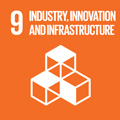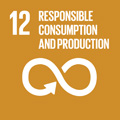- Docente: Alessandro Tugnoli
- Credits: 9
- SSD: ING-IND/25
- Language: Italian
- Moduli: Alessandro Tugnoli (Modulo 1) Giordano Emrys Scarponi (Modulo 2) Alessandro Dal Pozzo (Modulo 3)
- Teaching Mode: Traditional lectures (Modulo 1) Traditional lectures (Modulo 2) Traditional lectures (Modulo 3)
- Campus: Bologna
-
Corso:
Second cycle degree programme (LM) in
Chemical and Process Engineering (cod. 8896)
Also valid for Second cycle degree programme (LM) in Chemical and Process Engineering (cod. 8896)
-
from Sep 17, 2024 to Dec 18, 2024
-
from Sep 17, 2024 to Dec 17, 2024
-
from Sep 16, 2024 to Dec 16, 2024
Learning outcomes
Knowledge about the fundamentals of chemical reactor engineering with particular emphasis on the criteria for the choice of the reactor configuration and of the operating conditions. Presentation and application of specific tools for the analysis, design and optimization of reactors.
Course contents
Requirements/Prior knowledge
A prior knowledge and understanding of local and integral balances of mass and energy balances, fluid dynamics models (perfect mixing and plug flow) is required to attend with profit this course.
In addition, students should master the utilization of spreadsheets and software tools for the numerical solution of ordinary differential equations and systems of algebraic equations.
Fluent spoken and written Italian is a necessary pre-requisite: all lectures and tutorials, and all study material will be in Italian.
Course Contents
Kinetic analysis of reactions: integral and differential methods.
Differential reactor.
Linear and non linear regression of experimental data by the least squares method.
Ideal reactors: mass and energy balances for batch, PFR and CSTR reactors.
Batch reactor: maximization of the productivity. Isothermic and adiabatic operation.
Plug Flow Reactor (PFR): profiles of the conversion, the temperature and the pressure along the reactor. Space-time concept.
Continuous Stirred Tank Reactor (CSTR): minimization of the volume of CSTRs in series.
Autothermal operation of a CSTR. Unique and multiple working states. Ignition temperature.
Reactors with recycle. Effect of the recycle ratio on the conversion.
Autocatalytic reaction: study of different reactor configurations. Optimal recycle ratio.
Multiple reactions: definition of selectivity, conversion and yield. Istantaneous selectivity. The cases of parallel reactions and reactions in series.
The case of Van de Vusse reactions. Choice of the optimal reacting system and operative conditions.
Effect of the temperature on the selectivity of multiple reactions. Choice of the optimal temperature.
Residence time distribution in a chemical reactor.
Equilibrium reactions: definition of the equilibrium constant.
Effect of the temperature, of the pressure and of the presence on inerts on the equilibrium conversion.Optimal conversion-temperature path for a reversible reaction. Adiabatic equilibrium conversion.
Heterogeneous catalysis. Effectiveness factor for a porous catalytic particle. Overall effectiveness factor.
Membrane processes: Pervaporation. Effect of temperature and permeate pressure on the performances. Membrane polarization. Hybrid processes.
Process intensification. Coupling of reaction and separation.
Sterilizatrion processes.
Processes for concentration of liquid solutions.
Processes for de-hydration and freeziong in food industry.
Readings/Bibliography
G.F.Froment e K.B.Bischoff, Chemical Reactor Analysis and Design, John Wiley and Sons, New York, 1979.
O.Levenspiel, Ingegneria delle reazioni chimiche, Casa editrice ambrosiana, Milano, 1978. (This the italian translation of the original version of this book in english).
K.G.Denbigh e J.C.R.Turner, Teoria dei reattori chimici, Principi generali, Etas Libri, Milano, 1978. (This the italian translation of the original version of this book in english).
Teaching methods
Presentation of the theoretical fundamentals by slides and blackboard.
Illustration of several examples to demonstrate the practical application of the theory.
Assessment methods
Achievements will be assessed by the means of a final exam. This is based on an analytical assessment of the "expected learning outcomes" described above.
The exam consists of a written test, duration about 3 hours, composed of 3-4 questions, aiming to demonstrate both the theoretical preparation and the capability of the student of solving design and analysis problems. Exam rules and detail are presented during the first lesson.
Higher grades will be awarded to students who demonstrate a sound theoretical preparation, an organic understanding of the subject, a high ability for the practical applications, and a clear, comprehensive and concise presentation of the contents.
To obtain a passing grade, students are required to at least demonstrate a knowledge of the key concepts of the subject, some ability for critical discussion, and a comprehensible use of technical language.
A failing grade will be awarded if the student shows knowledge gaps in key-concepts of the subject, inappropriate use of language, and/or logic failures in the analysis of the subject.
Teaching tools
Case studies.
Solution of selected problems.
Software tools for the solution of selected problems.
Teaching material (theory presentation and illustration of some problem solutions).
Office hours
See the website of Alessandro Tugnoli
See the website of Giordano Emrys Scarponi
See the website of Alessandro Dal Pozzo
SDGs


This teaching activity contributes to the achievement of the Sustainable Development Goals of the UN 2030 Agenda.
